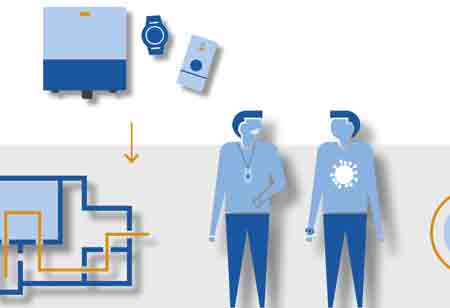Thank you for Subscribing to Gov Business Review Weekly Brief
Using Big Data to Fight Crime: What are the Benefits?
Various spheres of existence continue to be reshaped by the Big Data revolution. Its effects have already extended beyond the business world.

By
Gov Business Review | Tuesday, December 17, 2024
Stay ahead of the industry with exclusive feature stories on the top companies, expert insights and the latest news delivered straight to your inbox. Subscribe today.
Various spheres of existence continue to be reshaped by the Big Data revolution. Its effects have already extended beyond the business world.
FREMONT, CA: Using advanced analytics, law enforcement agencies can identify criminals before committing crimes. The first positive outcomes of algorithm-human cooperation have been established. Crime analytics is an effective tool for energetic crime prevention and investigation. But it would be worthless without its users. Let's study how Big Data can help fight crime.
The LAPD began utilizing big data crime analysis in 2010. They uncovered that crime tracks the same pattern as seismic aftershocks. While forecasting an earthquake is hard, predicting its aftershocks is easy. Utilizing crime data, the LAPD created an algorithm to identify criminal occurrence trends. A pattern of unlawful activity matched that of aftershocks whenever a crime occurred in one place.
Software for lessening crime
PredPol, the most famous predictive policing program, was created and used initially by Los Angeles and Santa Cruz police divisions. With an accuracy of 500 square feet, the software can predict where crimes are likely to happen. Officers loaded up with data already have some impressive results—in Los Angeles, there has been a 33% decrease in burglaries and a 21% decline in violent crimes in regions where the program has been employed. No wonder other city governments have swiftly expressed interest in the ground-breaking new software. After the Atlanta Police Department employed PredPol, the city saw a 19% diminish in total crime and other instances of another positive stationing. PredPol software is now being experimented with in over 150 locations across the United States, with extra cities likely to follow.
IBM is noteworthy for being a substantial participant in purchasing analytic start-ups and spending billions of dollars on predictive software. Other important developers of analytical tools, like IBM, do not lag. They initiated Coplink software a few years ago, which allows police divisions across the United States to mine one another's databases to place wanted individuals. Although someone gets arrested in Arizona for jaywalking, police officers can compare his details and directly recognize him as the suspected murderer from North Dakota hundreds of miles away.
Identify criminal patterns
The employment of Big Data criminal investigation techniques is not limited to this. Advanced analytics can detect patterns of illegal activity ranging from burglary to murders or domestic violence. Police departments can now sift through massive volumes of data to identify specific lawbreakers. For instance, officers might anticipate future actions whose former crimes have been recorded by assessing his entrance procedures, the time of the break-ins, the type of properties aimed, and the geographical distance of previous burglaries. The details on a precise criminal can then be combined with national records to perform a large-scale study of burglaries, helping police officers identify patterns on when and where break-ins will likely occur next. With helpful data on crime patterns, law enforcement systems can deploy extra personnel in high-risk outlines. If they know, for instance, that burglaries are more likely to happen in certain districts during specific seasons and hours, they can give additional police officers to those areas.
More in News






